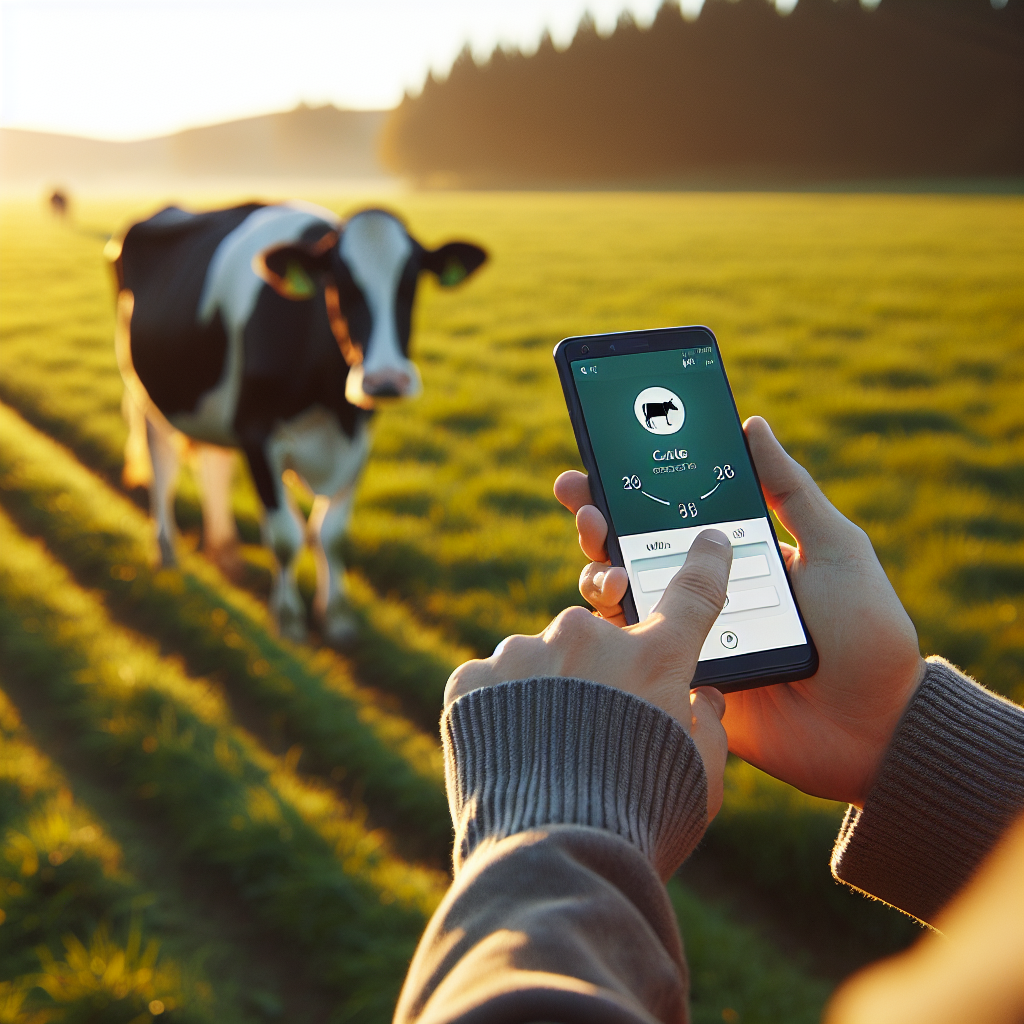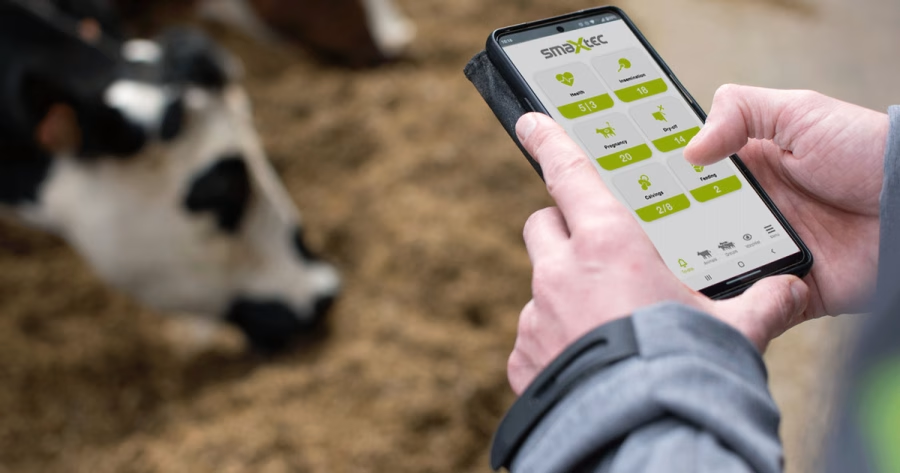Learn how 406 Bovine’s AI app uses facial recognition to quickly identify cattle. Looking to manage your herd’s health and movement with just a photo? Find out more.

Consider identifying each cow from 50 feet away and immediately knowing its health state and treatment history. This is achievable because AI and face recognition drive a technological revolution in agriculture. The 406 Bovine app improves dairy production by letting you follow a cow’s health and mobility simply by photographing its head. This produces a digital twin for each animal, which increases efficiency and profitability. This technology addresses critical difficulties such as exact animal identification, improved health monitoring, and real-time data on behavior. Adopting this modern technology is essential for competitiveness. If efficiency and animal care are top objectives on your farm, the 406 Bovine app is a must-have.
The Technology Behind 406 Bovine: Revolutionizing Cattle Management with Cutting-edge Facial Recognition
The technology underpinning 406 Bovine uses cutting-edge face recognition algorithms to transform cow management. The program employs powerful artificial intelligence algorithms to record and analyze cow head photos from a smartphone. The program uses a picture to scan unique face traits such as muzzle shape and ear location, resulting in a ‘digital twin’—a complete digital profile of the cow.
To assure accuracy, a 3-second video or high-resolution photos are captured first. The AI backend then employs machine learning models built on large datasets of cow faces to identify individual animals. This information is saved in the app’s database, enabling producers to access health and treatment information easily. Integrating AI and face recognition improves livestock management efficiency and eliminates mistakes in manual identification.
The Advent of Facial Recognition Technology: Transforming Cattle Management
Face recognition technology in livestock management provides dramatic advantages to farmers. Tracking each animal’s wellbeing, activity, and treatment data provides farmers valuable insights into herd health and behavior, leading to improved management techniques. This innovative technology replaces old, time-consuming methods such as visual identification and manual recording, both prone to mistakes; with applications such as 406 Bovine, the efficiency of managing huge herds rises since each cow can be recognized with a simple snapshot of its head. This precision extends to health monitoring, allowing for early diagnosis of problems. Farmers may use their cellphones to view a cow’s history data, including prior diseases and treatments, allowing them to make educated choices right now. Artificial intelligence provides near-perfect accuracy, representing a massive advancement in precision farming. Adopting such new solutions results in more robust processes, decreasing dependency on physical labeling, manual chutes, and scales. This reduces animal stress and promotes sustainable and lucrative agricultural practices while addressing current cow management challenges.
Modern Farming Meets High-Tech: The Power of a Simple Snapshot
Picture a scenario where a producer enters the pasture armed with just a smartphone. With a single snapshot of a cow’s head, the 406 Bovine app instantly provides a wealth of information, including health conditions, movement history, and potential medical treatments. If a cow appears to be limping, the producer can consult its digital twin to review past incidents and treatments, identifying irregularities that may indicate illness before symptoms appear. This allows for swift medical interventions, demonstrating the practicality and usefulness of the app in everyday farm tasks.
During regular wellness checkups, a simple snapshot updates health parameters. It maintains correct digital profiles, eliminating the need for manual recording. Tasks like identifying and delivering immunizations become more efficient and error-free since the app certifies each cow’s identification and medical history, assuring proper care.
Challenges and Considerations: Navigating the Complexities of Integrating Facial Recognition in Cattle Management
Despite its potential, using face recognition in livestock management poses various obstacles. High-quality photographs are critical for successful identification; lousy lighting, obscured vistas, and low-resolution shots may all degrade the system’s accuracy. Weather fluctuations, dust, and camera wear all impact picture sharpness, adding to the complexity. Ensuring that cameras and software respond to the changing environment is critical. The initial setup may also be resource-intensive, requiring precise collection of each animal’s face characteristics. This phase involves time, effort, and investment in suitable gear and software. Maintaining the system over time requires continual maintenance and may pose budgetary issues. Addressing these difficulties with creative, practical solutions will help farmers fully benefit from AI-powered livestock management, resulting in a more efficient and sustainable agricultural business.
Looking Ahead: Integrating AI and Facial Recognition in Agriculture
Integrating AI and face recognition in agriculture can transform industry standards and operational efficiency. As technology progresses, we anticipate improved biometric monitoring, enabling farmers to remotely assess health variables such as hydration and stress. Enhanced sensors and AI will identify minor behavioral changes, offering more insight into animal wellbeing.
Future dairy cow operations systems might assess movement, feeding, and social activities to maximize milk output. Enhanced data analytics will help anticipate and manage breeding cycles, increasing herd production.
Furthermore, these innovations might readily interface with current farm management systems, enabling synchronization of real-time health and productivity data. Remote monitoring via smartphone applications might make this technology accessible to smaller farms, lowering the need for regular human control and providing ease to dairy companies globally.
Artificial intelligence promises increased efficiency and output and more sustainable and compassionate agricultural techniques as it advances.
The Bottom Line
Artificial intelligence techniques, such as 406 Bovine’s face recognition technology, are indeed changing the game in cow management. This software allows for rapid identification and monitoring with a single snapshot, resulting in ‘digital twins’ and detailed health, mobility, and treatment data. Despite certain limitations, this technology simplifies management and enhances herd health monitoring. The app’s excellent accuracy and ease of smartphone data access make it an appealing choice. We urge producers to embrace this invention to boost output, minimize manual work, and improve cow management. Looking forward, AI and face recognition will be critical in agriculture. Adopters will remain competitive while contributing to sustainable, efficient agricultural techniques. It’s time to embrace AI for a better, more productive future in cattle management. The bottom line is clear: AI and facial recognition are not just the future, they’re the present, and they’re here to stay.
Key Takeaways:
- Precision Identification: The app can accurately recognize individual cows from a distance of 50 feet, streamlining identification processes.
- Digital Twins: Each cattle is assigned a ‘digital twin,’ allowing producers to efficiently track and manage wellness, movement, and treatment data.
- Enhanced Efficiency: By simply taking a photo of an animal’s head, producers can access comprehensive data instantly, significantly enhancing operational efficiency.
- Health Monitoring: The detailed data gathered by the app permits proactive health monitoring, enabling early detection and treatment of illnesses.
- Integrative Approach: The app integrates advanced AI and facial recognition technology, representing a significant leap forward in modernizing cattle management practices.
- Future Potential: The success of integrating AI in agriculture suggests promising future advancements, further revolutionizing farming methods.
Summary:
The 406 Bovine app is revolutionizing cattle management by using advanced face recognition technology to track cow health and mobility. This technology allows for immediate identification and monitoring of each cow’s health and mobility, creating a digital twin for each animal. This increases efficiency and profitability by addressing critical difficulties such as exact animal identification, improved health monitoring, and real-time data on behavior. The AI backend uses machine learning models built on large datasets of cow faces to identify individual animals, saving this information in the app’s database. Integrating AI and face recognition improves livestock management efficiency and eliminates mistakes in manual identification. However, challenges such as high-quality photographs, weather fluctuations, dust, and camera wear can degrade the system’s accuracy. Integrating AI and face recognition in agriculture can transform industry standards and operational efficiency, allowing for more efficient dairy cow operations systems that assess movement, feeding, and social activities to maximize milk output. Remote monitoring via smartphone applications may make this technology accessible to smaller farms, lowering the need for regular human control and providing ease to dairy companies globally.












